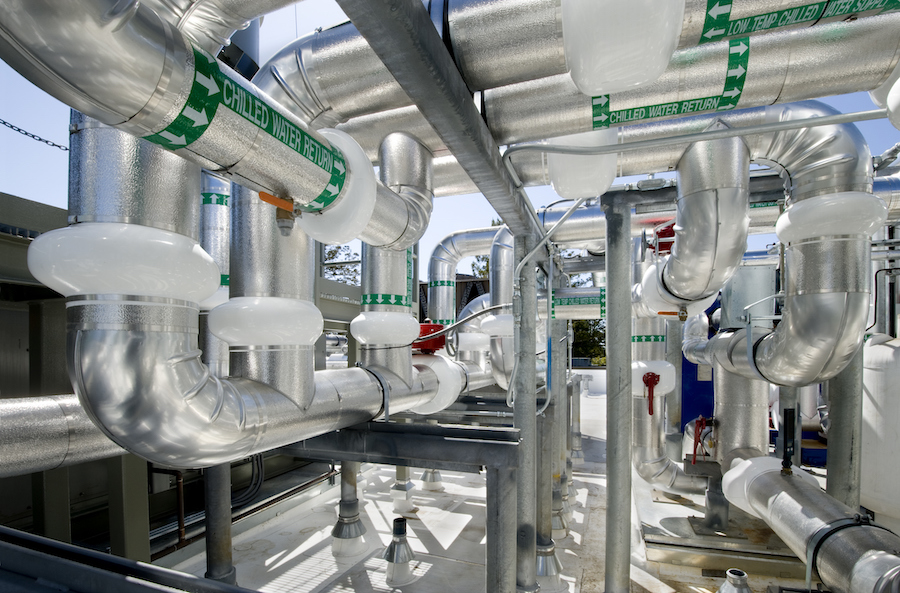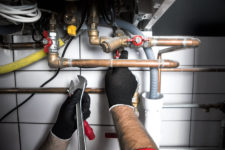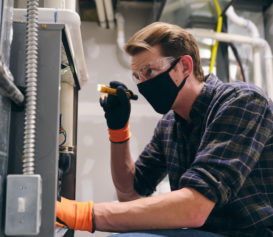We’re excited to share best practices and thought leadership from some of this year’s RealFocus event partners. Here’s a guest post from the team at Parity, leading experts in HVAC energy management. Read on to find out more about how predictive maintenance can enhance your proactive maintenance program.
Property managers and building staff know that one of the largest risks buildings face is equipment damage – especially from larger, older, or complicated equipment. Whether it’s from wear and tear, age, or bad luck, equipment repairs can ruin budgets.
A smart approach to building maintenance is proactive maintenance. Proactive maintenance aims to prevent equipment failure before it occurs. Proactive maintenance maximizes the lifespan of equipment, reduces unplanned downtime, and minimizes the cost of repairs or replacements. Proactive maintenance typically involves the following:
- Regularly scheduled equipment inspections
- Routine equipment servicing
- Training and educating maintenance staff
- Good record keeping
You can learn more about effective proactive maintenance strategies through SiteCompli’s blog series here, and here. That said, if you don’t have a trusted solution like InCheck, manual methods of performing and tracking proactive maintenance can be prone to human error or neglect.
Introducing Predictive Maintenance
A relatively new type of proactive maintenance is predictive maintenance.
Predictive maintenance helps to identify potential problems before they lead to breakdowns. This is accomplished using data and technology (sensors, monitoring systems, and analytics) to predict when maintenance is needed based on real-time data and historical trends. Often, early fixes or improvements can prevent costly and invasive repairs later.
Here are the basic components of any predictive maintenance program:
- Data Collection: Sensors, IoT devices, and other data sources are used to collect real-time data from equipment continuously. This data can include information on temperature, pressure, speeds, and more. [Editor’s Note – “IoT” – the Internet of Things – is becoming more and more prevalent in property management and operations! Check out our quick explainer on how thinking about IoT can help you.]
- Data Analysis: Advanced analytics, machine learning, and AI algorithms are applied to the collected data to detect patterns and anomalies. These algorithms can identify early signs of equipment wear, deterioration, or impending failures.
- Condition Monitoring: Predictive maintenance systems constantly monitor the condition of equipment and machinery. They compare the real-time data to established baselines and thresholds.
- Failure Prediction: Based on the data analysis, the system can predict when a component or total equipment piece is likely to fail. This information is used to schedule maintenance activities precisely when needed.
Predictive maintenance offers several benefits, including cost savings, increased equipment reliability, operational efficiency, and worker safety. To implement a predictive maintenance program successfully, organizations need to invest in the necessary technology, data collection systems, and analytics expertise to interpret the data effectively.
Finding The Right Solution
It’s important to select the right predictive maintenance solution for your building. The company should have a technology-first approach, involve a combination of technologies and tools, and be brand agnostic.
Here are common features to keep an eye on when looking for a solution:
- Sensors and Data Acquisition: Sensors and data collection devices, like VFDs, are installed on or near the equipment to continuously transmit real-time data to centralized systems. VFDs, or Variable Frequency Drives, are a type of motor drive that controls the equipment speed by varying the frequency and voltage supplied to the electric motor. The faster the frequency, the faster the speed.
- Data Storage and Management: Real-time data is combined with historical data and stored in cloud-based platforms, making it easier to access for your team – no matter where they are.
- Data Analytics and Machine Learning/AI: Advanced analytics and machine learning algorithms process the collected data to identify patterns, anomalies, and trends. Machine learning is an important function of the modern-day building because every building has a unique set of equipment. Smart systems with ML can better understand equipment use over time, making the building more efficient and providing better and more accurate alerts.
- Alerts and Notifications: Predictive maintenance systems should send alerts and notifications to maintenance teams when they detect abnormal conditions or impending failures. Some examples of conditions that could trigger alerts include low or high domestic hot water temperatures, low pressure, unexpected changes in cooling or heating supply temperatures, and MAUs.
- Failure Prediction: Predictive models forecast when specific components or equipment are likely to fail. Ideally, you would know about any potential issues before your residents were impacted at all.
- Remote Monitoring: In some cases, equipment can be monitored remotely, allowing for predictive maintenance actions even in geographically dispersed locations.
- Scalability and Flexibility: Predictive maintenance solutions should be scalable to accommodate a growing number of monitored assets and flexible to adapt to different types of equipment.
Ultimately, predictive maintenance is a great, cost-effective way to maintain your HVAC equipment. Property teams can maximize the lifespan of their equipment, reduce unplanned downtime, and minimize the cost of repairs or replacements – maintaining comfort for your residents and freeing up important time for your staff.
Parity is an HVAC Optimization as a Service company. We maximize energy efficiency and reduce energy costs through remote optimization of HVAC equipment. To learn more about how we help property teams, reach out to contact@paritygo.com or visit our site at https://www.paritygo.com/.




